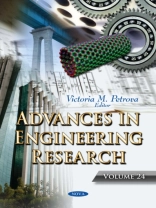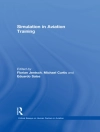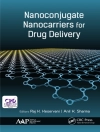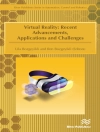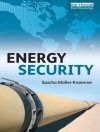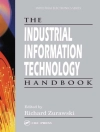Advances in Engineering Research. Volume 24 begins with a discussion of solvent extraction, which is widely applied and has shown significant advances in the last four decades. The simplicity, speed and vast scope of solvent extraction are key in separation, purification and enrichment steps in many fields such as analytical chemistry, chemical engineering, and hydrometallurgy. Solvent extraction has become crucial in the intensification processes due to its excellent characteristics.Next, the authors review the on-road test and Real Driving Emissions, focusing on the main concepts, developments and future challenges, as well as presenting their shortcomings. The gap between regulated emissions from vehicle certification procedures and real-world driving has become increasingly wider, particularly for nitrogen oxides (NOx). Even though stricter emission regulations have been implemented, NOx emissions are dependent on specific, short-duration driving events which are difficult to account for. Therefore, high concentrations of these pollutants are still being measured in European cities.The following chapter presents a reverse engineering approach by utilizing laser scanning technology in cultural heritage in two case studies. An analytical methodology is presented revealing the step by step approach from scanning to prototyping, which is a part of the larger field of digital archeology. A variety of parties could benefit from the demonstration of such an analytical approach, including production engineers, three-dimensional CAD users and designers, archeologists and museum curators.This compilation also examines pressure tests conducted in EOR projects where heat has caused changes in the viscosity of the reservoir fluids, which creates a difference in mobility between two zones of the reservoir. Under those conditions, the reservoir becomes a composite with two different zones. Inaccurate results will be obtained if the well test interpretation is not conducted properly, so a practical methodology for the interpretation in such systems is presented.Later, the latest advances in the modeling of gas-solid reactions are described in detail, and a review is provided on the early approaches to the modeling of gas-solid reactions. It is concluded that there are two major groups of models: the pore models and the grain models. The main shortcomings of classical models are the assumption of a uniform initial microstructure and that the sintering effect is neglected.In conclusion, Wi MAX or Worldwide Interoperability for Microwave Access, based on IEEE 802.16, is proposed as the standard for broadband wireless access (BWA) over a large metropolitan area. Wi MAX has received widespread support from both the computer and telecom industries worldwide, making this technology particularly cost-effective. Flexible bandwidths and different modulation schemes enable Wi MAX systems to adaptive change of the speed and capacity of the wireless connection based on the demand.
Victoria M Petrova
Advances in Engineering Research. Volume 24 [PDF ebook]
Advances in Engineering Research. Volume 24 [PDF ebook]
Achetez cet ebook et obtenez-en 1 de plus GRATUITEMENT !
Format PDF ● Pages 258 ● ISBN 9781536140460 ● Éditeur Victoria M Petrova ● Maison d’édition Nova Science Publishers, Inc. ● Publié 2018 ● Téléchargeable 3 fois ● Devise EUR ● ID 6877775 ● Protection contre la copie Adobe DRM
Nécessite un lecteur de livre électronique compatible DRM
